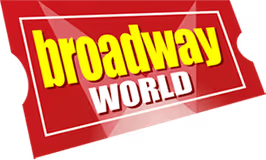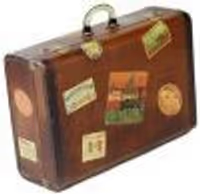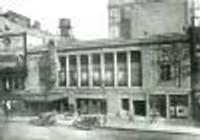New York in the 70s
#25New York in the 70s
Posted: 6/23/11 at 8:57am
As far as the crowds ...
Times Square was always crowded at almost any hour of the day, 24/7, at least going back to my days in the mid-80s. But it's gone WAY beyond that now. Sometimes, you can barely move. As someone who doesn't live there anymore, but visits, I can see the noticeable differences each time I go back. And it's pretty significant.
And there were always tourists stopping to gawk and look. Always, going back to turn of the last century. But when you've got 300 people standing on a single street corner and 20 stop in their tracks to gawk, you've got a major clog in the traffic flow. It can be frustrating, especially when there's no room at all to step around them. There used to be room (at least some room). That's gone now.
blocked: logan2, Diamonds3, Hamilton22
#26New York in the 70s
Posted: 6/23/11 at 9:12amI was a tourist here up until January when I moved here. I am originally from Philly so I would go up to NYC as a teenager to see shows. Something I always do when I am visiting another city is to pay attention to what is going on around me and how things "work" in that city.
#27New York in the 70s
Posted: 6/23/11 at 9:15am
The majority of tourists do, uncageg. It's only a handful of tourists (and some stupid locals, too) who "clog the pipes."
But when the streets are as insanely crowded as they are today, it doesn't take much to clog them.
blocked: logan2, Diamonds3, Hamilton22
#28New York in the 70s
Posted: 6/23/11 at 9:17amI know they do besty, but you are correct in that it only takes a few. I go up 8th a lot and it just drives me crazy! But then I say to myself "but you are in NYC"!
#29New York in the 70s
Posted: 6/23/11 at 9:22am
I walk through Times Square now and I think, "This isn't New York. This is Vegas."
Ah, well. Times change.
#30New York in the 70s
Posted: 6/23/11 at 9:22amWe used to be able to slip around them. Now there's no room to slip. That's the biggest difference in the crowds.
blocked: logan2, Diamonds3, Hamilton22
#31New York in the 70s
Posted: 6/23/11 at 9:26am
"Without those tourists you would not have a theatre district."
Bullpucky. Hogwash. A ridiculous statement that betrays an utter lack of rudimentary knowledge of history.
The theatre district predates tourism by decades. NYC didn't become a major tourist destination until after WWII, and didn't reach the numbers we have today until the 80s.
Theatre would survive perfectly well without the tourist herds, thank you. There are some who think it would even improve in quality.
What I regret, as a New Yorker, is being unable to visits swaths of my city because of constant impenetrable crowds of poorly-behaved, or merely confused, vacationers. I know they bring many dollars to tourist-related industry, but I don't work in a tourist-related industry. I'm also aware that, if tourism dropped off, we would have fewer restaurants, but I could accept that...
New York, of course, doesn't hold a monopoly on this situation - I've witnessed similar tourist takeovers in London and Rome.
#32New York in the 70s
Posted: 6/23/11 at 9:28am
We used to be able to slip around them. Now there's no room to slip. That's the biggest difference in the crowds.
I do appreciate the pedestrian areas in the streets by Herald Square and Times Square, as they've now opened the sidewalk up for efficient walking.
#33New York in the 70s
Posted: 6/23/11 at 9:38am
Exactly besty and sometimes when you say excuse me, they look at you like your are crazy or look like you are annoying them. Now the one group of tourists that don't bother me as much are the large group ok kids on school trips, etc. Yes they can totally clog up the sidewalks but they are kids in the big city. Some can be a bit unruly though.
But back on topic, I don't remember these kinds of crowds when I was a kid. Also, I don't remember stagedooring being what it has become. One great memory I had was when I dropped my cousin off to see The Wiz at the Broadway Theater. A friend and I were going to see "Annie" (I think). We walked around the side of the theater and sitting on the stairs outside was Stephanie Mills eating a Peanut Butter and Jelly sandwich in her costume. I nearly died. We actually stopped and chatted with her for a few minutes. That couldn't happen now at popular shows.
#34New York in the 70s
Posted: 6/23/11 at 9:42am
The Disneyfication of 42nd Street mentioned by Best 12 Bars is the single most important reason for the changes that are so evident now.
To go back several years, the Nederlanders bought the New Amsterdam Theatre when it was a "grind house" churning out spaghetti westerns and the like 24 hours a day. But the Nederlanders did not take care of their theatre. They started to renovate it and then just gave up, leaving the roof open to the elements.Rain and snow seeped in, dripping down into the auditorium and ruining the great murals that had been there since the opening of the theatre in 1902, when it was described as one of the finest Art Nouveau treasures in the country.
After a while the New York Cultural Affairs Department got involved: they wished to save the New Amsterdam, but where to get the money? Disney then expressed Interest in the project, providing that the City made a real effort to get other corporate sponsors to renovate other theaters along 42nd Street, particularly the New Republic right across the street from the New Amsterdam.
Finally the deal was struck and Disney agreed to pour money into the renovation of the New Amsterdam, their new pet project. They did a magnificent job, restoring the theatre with tender loving care.
While the New Amsterdam was undergoing it's transformation, I had the good luck of being on W. 41st Street in front of the Nederlander Theatre where RENT was playing, looking up at the finished exterior facade of the New Amsterdam's
41st Street elevation. The construction foreman was watching me and said, "How would you like to take a look at the Rooftop Theatre (where Ziegfeld's MIDNIGHT FROLICS had taken place during the heyday of the ZIEGFELD FOLLIES)". He took me up in the construction elevator to show me the rooftop theatre, which was completely gutted. He then took me to the second balcony where he proudly showed me the new wood paneling. Next he said that he was busy but offered me the opportunity of going on the main stage which was empty except for new steel girders and the like in the flies. So there I was on stage which had seen the likes of Fanny Brice, Ed Whinn, Eddie Cantor, and Will Rogers. I looked out at the audiitorium which at that point did not have seats. What a thrill this all was for me.
So Disney acted as a catalyst for the rest of 42nd Street, and the results are what you see today.
Then
#35New York in the 70s
Posted: 6/23/11 at 9:44amI could be wrong, but I feel like the internet has had a big influence on the intensity of stagedooring. Most people probably didn't know what Stephanie Mills looked like at the time and wouldn't even think to talk to her. Now, with the internet, we see pictures and videos of everyone from the leading actors to the ensemble and can't help but recognize them when we pass them on the street.
#36New York in the 70s
Posted: 6/23/11 at 9:45am
I'm sorry, but it is true, Broadway wouldn't survive without the tourists. We should be happy to have them. Someone please bring up the statistics. I've seen them multiple times. More than half the percentage of many shows are filled by tourists (who are usually the ones paying full prices). The shows that arent filled with tourists still generate a huge profit from them. Remember, they usually are paying full price, whereas lots of locals and industry members know good discounts.
Plus actors and directors and stagehands and musicians are all getting paid much more with the unions and the cost of running a show is WAY up from previous years and that is another reason why tourists are needed.
And newintown, NYC has ALWAYS been a major tourist destination.
Anyway, what I was originally going to say was:
We are lucky that the city has made efforts to improve the situation by adding pedestrian walkways where Broadway used to hold vehicle traffic. Remember fighting the crowds when there was JUST the sidewalks? Someday there will be a thread called, "REMEMBER WHEN YOU COULD DRIVE IN TIMES SQUARE?"
Updated On: 6/23/11 at 09:45 AM
#37New York in the 70s
Posted: 6/23/11 at 9:49amnewintown: this actually backs you up a little bit. This was a cool link I found: http://www.broadwayuniversity.com/pc_5.htm
#38New York in the 70s
Posted: 6/23/11 at 9:52am
givesmevoice, the internet may have played some part on the intensity now but people did know who Stephanie Mills was back then. We did have tv and radio! And we read the newspapers. I only stagedoored twice back then and it was nothing like it is now. I can remember getting my hands on the New York Times theatre section always being a thrill. :)
#39New York in the 70s
Posted: 6/23/11 at 9:55am
*Broadway shows 63 percent more likely to be seen by tourists than New Yorkers*
http://articles.nydailynews.com/2010-12-08/entertainment/27083749_1_broadway-audience-tourists-new-yorkers
#40New York in the 70s
Posted: 6/23/11 at 9:56amI know a number of New Yorkers who don't attend the theatre as much as they used to because of the tourists.
#41New York in the 70s
Posted: 6/23/11 at 9:57am
We did have tv and radio! And we read the newspapers.
I was thinking about that as I was typing my response, so you got me there.
#42New York in the 70s
Posted: 6/23/11 at 9:57am
Sorry, bandit, but you're wrong. NYC was not a tourist destination in the way we perceive it today, simply because so few people had the funds to travel those distances, stay in hotels, eat in restaurants pre-WWII.
It's sad how little people know about simple cultural history (even sadder how little they're interested in knowing anything about it).
Broadway existed before masses of tourists; it would continue to exist without them, too (it would just be different - no 12-year runs of glorified children's theatre like Cats or Phantom).
#43New York in the 70s
Posted: 6/23/11 at 10:00am
Sorry again, bandit - it looks like you changed your stance in your second post. Here's the perfect quote from your linked article:
"Up until 1980, 2/3 to 3/4 of the people in a typical Broadway audience were from the Metropolitan New York area."
#44New York in the 70s
Posted: 6/23/11 at 10:10am
"Also, I don't remember stagedooring being what it has become."
Oh, not even remotely!
And Broadway is now a (high profile) star-driven business that does require the tourist trade. It also lends itself to the now-standard barricades and stage-dooring mobs. There was NOTHING like that in the '80s. There were no barricades at all, and usually not more than 15 people at the most waiting for autographs. That was typical.
As someone pointed out here, they paid $15 to see the OBC of A Chorus Line, the hottest ticket in town, with an orchestra seat. Shows didn't cost as much to produce back then, because salaries were a fraction of what they are now. When an established star played on Broadway, they were paid next to nothing. Not $15K per week. More like $200 per week (not a joke). But now a Broadway star, even a theatre star, not a movie or TV star, can command $8K to $10K per week, if they're in demand enough. (I do know this for a fact, as far as salaries go.) It's not just the stars (as has been discussed in other threads), it's the entire cost of putting on a show. People on Broadway were barely paid a living wage "back in the day." It was "what they did for love." Now they do it for profit, not just a living, and not just for love.
In order to sustain that, you MUST have the tourist trade. Or you can throw them all out (yeah, try it!) and charge $30 a ticket again. Then you'll have your "starving artists" Broadway again.
I actually see in the next 20 years or so, Times Square will be come a "pedestrian-only zone," like Florence, Italy, and other larger cities with serious traffic issues. They can't widen the sidewalks or move the buildings, so they'll make it pedestrian-only for a 6 to 10-block radius. People will freak out and say, "How can we ever manage?" as they did in other cities, but they will learn to work around it. That's the future. Give it another decade or two. And they will also charge a premium fee for driving anywhere near Midtown, as they do in the center of London.
blocked: logan2, Diamonds3, Hamilton22
#45New York in the 70s
Posted: 6/23/11 at 10:12am
New York in the 70s... it was such a huge part of my life. It was where many of the "roots" of my life took shape.
I was born in NYC, and then was raised just outside of the city. It was a constant presence in my young life, as my parents were very much tied to it, and being in NYC was as common as being in my backyard. I loved it. All of it. The stuff that I wasn't supposed to see made me realize that life was about more than my hometown. (And I loved my hometown... the balance of the two influenced me in great ways)
As soon as I was able to convince my parents that it was ok to take a train to the city, with my best friend, (we were young teenagers!), we grabbed every chance we had to do so. We'd buy the cheapest tickets for ALL the shows. We went to the ballet and the opera and the symphony and we'd see our favorite stars in our favorite shows as many times as we could. It was magic. It was transformative. It made me realize what my life passions would be. I was there ALL THE TIME! I loved it.
I worked hard at my after-school and summer jobs to have the money to afford these passions. We planned weekends around seeing as many shows as possible. We found the coffee shops and restaurants that were affordable on a teenage 'income'. Howard Johnsons was a splurge! We'd split soup and sandwich deals. It was heaven!
I was careful. But, I accepted all of it for what made NYC alive to me. I never felt afraid. Perhaps I was naive? Perhaps at first I was too young for anyone to bother with me. But, as I grew through my teenage years, and into my college years, I never felt threatened. I was careful to walk on certain streets back to the train station, but didn't give it much more thought. It just was what it was.
I loved it.
As I love it, still. All of it. It's New York. It lives and breathes and changes. And, whether it's the NYC/Times Square of my past or a newer, cleaned up version, I like to think that some teenager is having the same experience and love affair that I did. The environment doesn't matter. The place, and what it has to offer, does.
#46New York in the 70s
Posted: 6/23/11 at 10:14am
I'm not changing my stance, I'm trying to LEARN as much as I can. It's sad how mean people can be on these boards and how quick to judge they are. Back in the 1920s, there were over double the amount of Broadway theatres that there are now, and because so much tourism died after the depression, the attendance went down and the theatres were demolished. NYC has always been a tourist destination. Never did try to say it was always a, "tourist destination in the way we perceive it today," like you accuse me of saying, i just said it has always been a major tourist destination. People still took vacations when they didn't have as much money.
Did you read my blurb about the cost of running shows nowadays compared to then? The cost has running a show has risen way more than the cost of living has risen, so they need more tourists to come see the shows or else they wouldn't be able to stay in business.
you say: "The theatre district predates tourism by decades." I'm not sure what you mean by that. When did tourism start? If it is the 1980s, then the theatre district predates "tourism" by a century. But I think tourism has been around forever.
Updated On: 6/23/11 at 10:14 AM
#47New York in the 70s
Posted: 6/23/11 at 10:18am
True about the stage-dooring!
I never stage-doored... I went to the shows, bought the souvenir programs, kept my Playbills neatly stacked in keepsake boxes, and bought the record albums of all the cast recordings.
The stage-dooring stuff of today is a whole new game.
#48New York in the 70s
Posted: 6/23/11 at 10:22amThere are famous stage door stories with huge names like Hepburn, Bacall, Taylor etc. but the mass crowds at shows like BOOK OF MORMON where these autographs would fetch (on a good day) 75 cents a piece is insane.
#49New York in the 70s
Posted: 6/23/11 at 10:24amI was actually propositioned by an actor at a stage door back in 1979 (or 80) after seeing Deathtrap.
Videos







